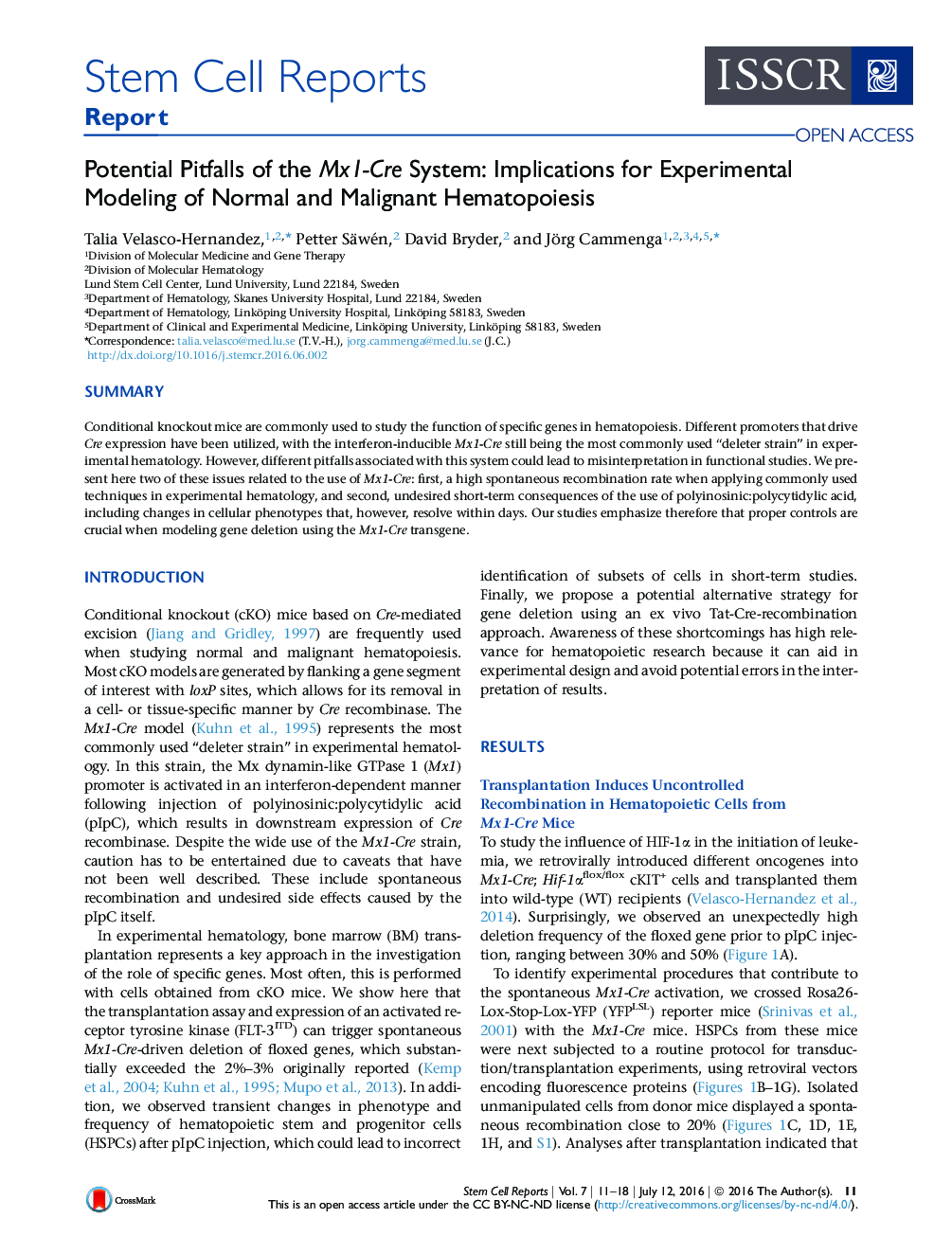| Article ID | Journal | Published Year | Pages | File Type |
|---|---|---|---|---|
| 2093238 | Stem Cell Reports | 2016 | 8 Pages |
•Common research methods induce uncontrolled activation of the Mx1-Cre system•The leakiness of the Mx1-Cre system can result in misinterpretation of results•pIpC alters the phenotype of HSPCs that resolves by day 8•pIpC has limited effects on the proliferation of HSPCs
SummaryConditional knockout mice are commonly used to study the function of specific genes in hematopoiesis. Different promoters that drive Cre expression have been utilized, with the interferon-inducible Mx1-Cre still being the most commonly used “deleter strain” in experimental hematology. However, different pitfalls associated with this system could lead to misinterpretation in functional studies. We present here two of these issues related to the use of Mx1-Cre: first, a high spontaneous recombination rate when applying commonly used techniques in experimental hematology, and second, undesired short-term consequences of the use of polyinosinic:polycytidylic acid, including changes in cellular phenotypes that, however, resolve within days. Our studies emphasize therefore that proper controls are crucial when modeling gene deletion using the Mx1-Cre transgene.
Graphical AbstractFigure optionsDownload full-size imageDownload as PowerPoint slide
